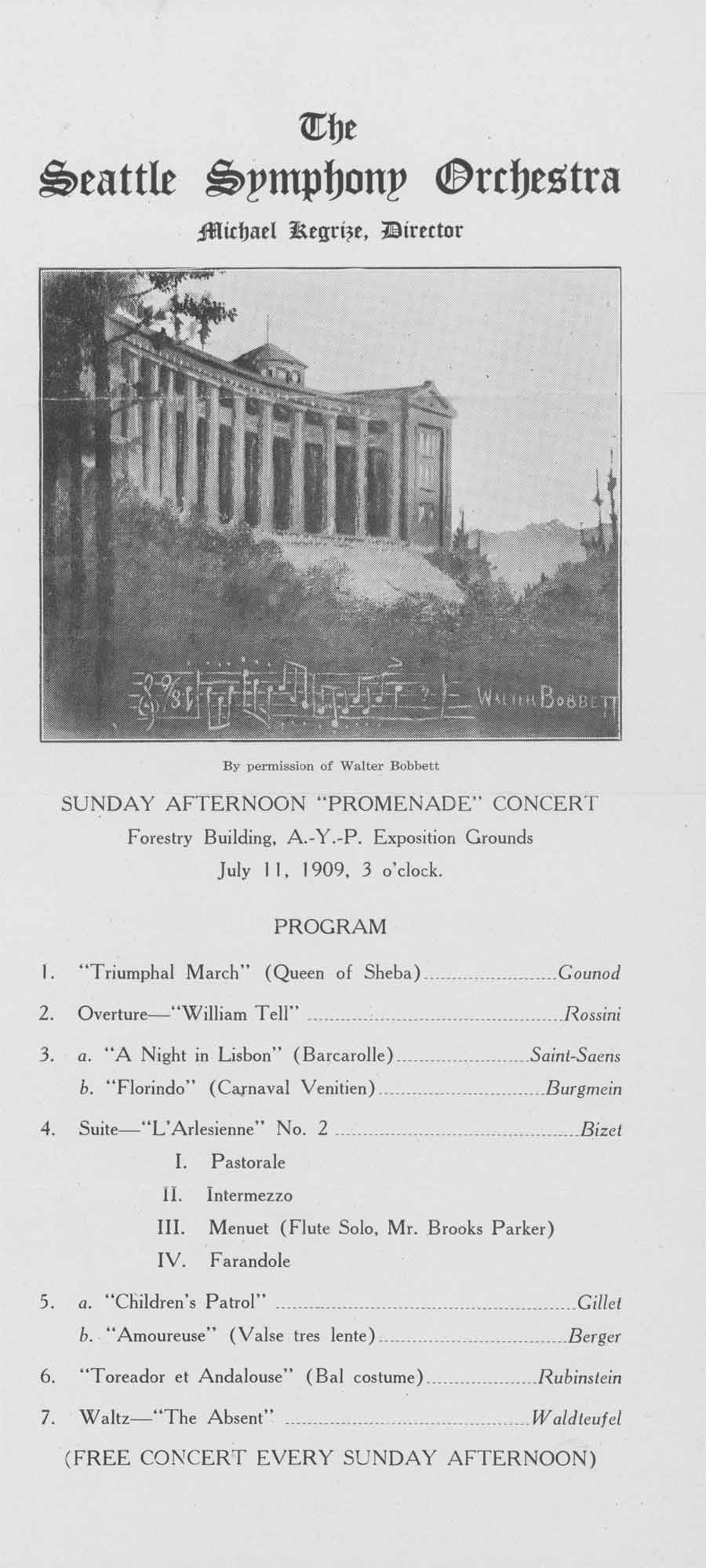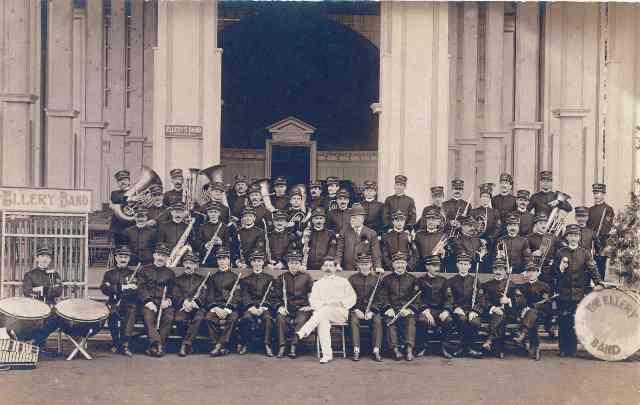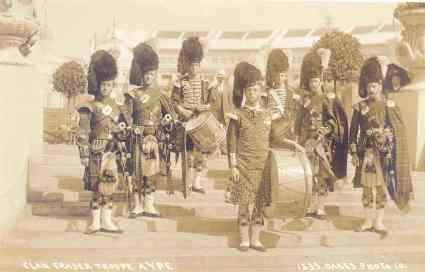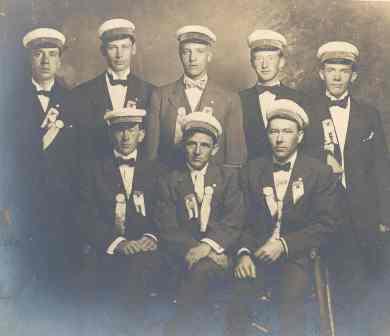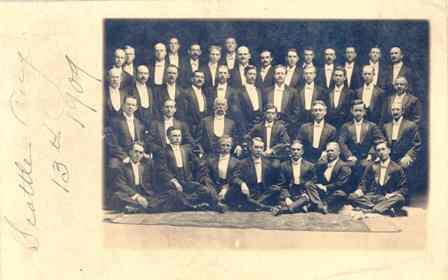Alaska-Yukon-Pacific Exposition - Images of the Fair
Music at the AYPE
these pages under development
Music was abundant at the AYPE and was represented in many ways - formal, popular, ad-hoc, purposeful, entertaining. Performances took place in and out of doors, ceremonially and spontaneously, in support of events, to help organize social relationships, to provide education, and to preserve culture among ethnic groups not far removed from centuries-old historical roots. Although the miracle of recorded music had been available for some time -World's Fairs helped provide its introduction - it was still limited, and music was brought to life through performance.
Seattle Symphony
The six-year-old Seattle Symphony, at the time the only regular symphonic orchestra west of the Mississippi, was an important feature of the fair. In this era classical music held a slightly different place in the hearts and minds of the public than it does today. Many great Romantic composers were still introducing important works, and there was an interest among people of all walks of life in all of the classics. Cowboys read Shakespeare over campfires to each other, painting was a regular part of a proper education, and the parlor piano had an important role in everyday entertainment. Imagine taking a train into the city from a nearby yet isolated farm, logging or mining camp, possibly without telephone or electricity, and hearing an orchestra play music of the masters that was otherwise known only through piano arrangements or small groups of wind or string instruments. The Seattle Symphony performed regularly on Sunday afternoons until disagreements with Fair management led to an end of arrangements in the middle of the Summer. But this opened the doors to one of the legendary chapters in the Symphony's history - the tenure of one its most significant conductors ever, the great American composer and conductor Henry Hadley. Hadley's beloved music was already featured in performance at the AYPE by groups such as the Schubert Club, before his pending arrival was known.
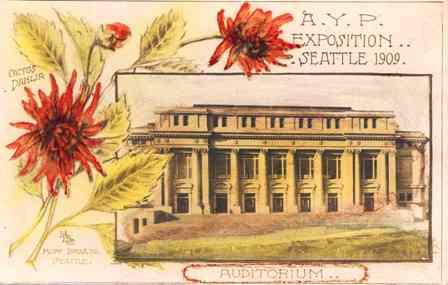
Photo postcard with hand tinting, pub. Hopf Bros. (photo attr. Nowell)
The Seattle Symphony played in many venues, including the Amphitheater and the Auditorium, which would become the University's first Meany Hall.
Washington State Historical Society
Symphonic Bands
Ellery Band at the AYPE Music Pavilion, anon. The instrument second from left in the back row is a Contrabass Sarrusophone, a metal, double-reed instrument with saxophone fingering, made by the Conn company.
The St. Louis Fair had the incomparable Sousa band in residence during the summer of 1904. As was the case with so many things at the AYPE, the pattern was followed with similar groups, famous at the time and providing world-class performances of classical and popular music. Four visiting bands in particular stand out: the Frederick Innes Band, the Channing Ellery Band, the Phillipine Constabulary Band and Liberati's Band. These bands provided an important artistic component of the Fair, alongside the architecture, fine arts, and landscape. They featured fine instrumental and vocal soloists in daily performances . Some idea of the height to which these performances could rise is illustrated in the interest generated by Innes' performance of the music of Richard Wagner on June 11. Many persons were so eager for the chance to hear Wagner's music performed that it was moved to a later part of the program so that more could attend. The evening concerts were given longer intermissions around fireworks displays after complaints arose that the noise interfered with the appreciation of the music.
Smaller Bands
Wagner's AYP Band, Nome Circle Bandstand Nowell photo
The Jolly Entertainers of the Des Moines, Wa. Children's Industrial Home, led by "Daddy Draper" toured the country. Nowell photo.
Seattle was also represented by "Pop" Wagner's band, a fine group that was the workhorse band of the fair, playing regularly in the Nome Circle bandstand, participating in ceremonies, and leading parades. Many other local bands - school groups, fraternal organizations, company bands also performed; too many to list here, many such as the Royal Hawaiians and the Metlakatla Indian School band were famous and significant for a variety of reasons. Dixieland Band List of known bands
Folk and Ethnic Music
Clan Fraser Troupe AYPE Oakes photo co.
Norwegian men's chorus at AYPE, anon.
Folk and Ethnic music were represented by touring professional groups - the Clan Fraser Troupe appeared in various World's Fairs including the 1901 exposition in Buffalo - and also in ethnic festivals that attracted choirs from throughout the region. Norwegian, Swedish, and German groups celebrated heritage and music together, preserving memories, strengthening relationships, and educating a generation born in a new land. Ethnic Music
Choral and Vocal Music
Albert Janpolski (Seattle Times 6/6/09)
Worchester, Mass. Glee Club at the AYPE 813/09, anon. This highly regarded ensemble toured nationally.
Popular and Sheet Music
(coming!)
